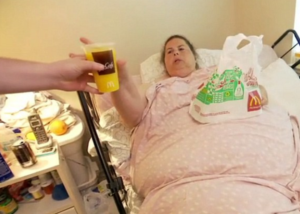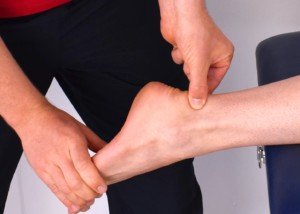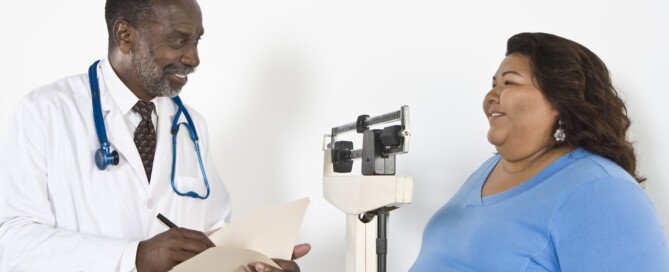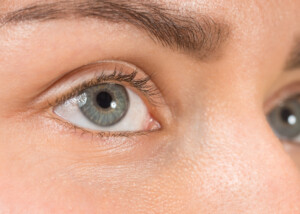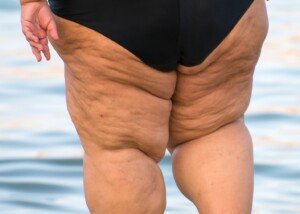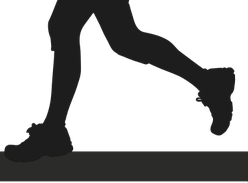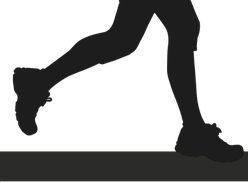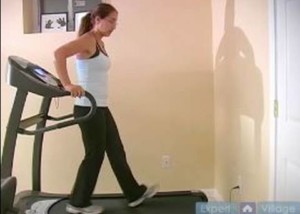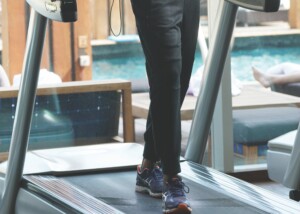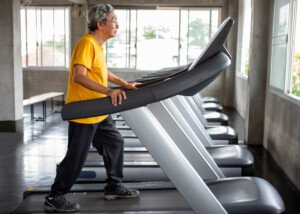Hoarding: How Can Anyone Allow Spouse to Become a Hoarder?

Why a spouse would ever allow hoarding behavior actually has explanations that make sense.
First of all, not every person would allow a spouse to hoard. It’s just that the hoarder lucks out and finds a spouse who decides to stay in the marriage.
So when wondering how a spouse could ever permit hoarding, first realize that most hoarders never marry.
This compulsive behavior doesn’t suddenly drop out of the sky at age 50.
“The basic features typically begin in adolescence,” says Gail Steketee, PhD, Dean Emerita and Professor Emerita, Boston University School of Social Work, co-author of “Stuff: Compulsive Hoarding and the Meaning of Things.”
Those basic features usually become full-blown in the 30s.
“By the time the person is approaching 50, the collecting, difficulty discarding and clutter has become severe enough to seek help.”
So why doesn’t the spouse put his or her foot down with hoarding?
Dr. Steketee explains, “It is awfully hard to decide when normal accommodation to a spouse’s messiness and enjoyment of keeping a lot of stuff has slid into tolerating serious hoarding behavior. I think this is the dilemma many spouses find themselves in.”
The hoarders I’ve seen on TLC’s “Buried Alive” don’t seem like bullies, so I wondered why their spouses wouldn’t take more charge.
Piles of clutter and garbage to the ceiling don’t appear overnight, so where are the spouses while the hoarder’s clutter grows over time?
Dr. Steketee explains, “I do agree that most hoarders are not bullies, although I have seen some exceptions, especially when it comes to someone else touching their things.
“Those who agree to be on TV are likely to be willing to have someone come into the home, perhaps a small subset of people who hoard.
“Most of those we have treated in our program would never allow anyone into the home and are reluctant to have a clinician visit; certainly touching their stuff without explicit permission and in their plain view would make some of them very upset and angry.”
Some people assert they’d never allow a spouse to become a hoarder. I even bring up Kate Gosselin of “Kate Plus Eight”; can you imagine her allowing any husband of hers to collect garbage?
We all know imposing neat freaks who’d fly off the handle over just one bread crumb on the table. Certainly, such a person would never allow hoarding.
“I’m cautious about using words like ‘never,’ but I suspect that such a neatnik spouse would have divorced a messy spouse some while ago,” says Dr. Steketee.
“But hoarding is not just about neatness; it is about attachment to objects with strong emotional reactions for various reasons, depending on the person.
“Many spouses are accommodating because they vowed to do just that when they married.
“Spouses who take these vows seriously and have tried to intervene but without success and in the face of much anger may just have backed off.”
This then becomes something akin to, “It’s my soul mate and her clutter, or a clean house and no soul mate,” in the mind of the non-hoarding spouse.
Hence, the spouse puts up with the hoarding, unable to imagine his or her life alone.
But when divorce occurs that’s triggered by hoarding, whose idea is it usually? The clean spouse, or the hoarder?
Dr. Steketee suggests, “It’s most likely to be the spouse who initiates the separation when they’ve tried hard to help their hoarding partner to change and it’s just not working.”
The subjects you see on “Buried Alive” do not represent most hoarders. Hoarders who’d never want to be featured on “Buried Alive” can be quite steel-boned about their possessions.
Dr. Steketee explains, “A person with very strong attachments and reasons for saving (it’s beautiful, I’ll need it someday, I’d be wasting it) can be very tenacious.
“If a hoarding husband was married to someone who tried to pick up after him, he might explode, she’d back off, and gradually their truce would be evident in piles of stuff she wasn’t allowed to touch but other areas where she controlled the space.” These dynamics are fairly common in married hoarding homes.
If the hoarder succumbed to a demanding spouse’s rules of No More Clutter, would this individual’s psychological issues manifest in some other obsessive-compulsive form?
“We don’t have any special reason to think that a predisposition to saving objects and making piles of clutter would otherwise express itself in compulsive or impulsive behaviors. No evidence there so far as we know at this point,” says Dr. Steketee.
Hoarders typically do not marry people like Kate Gosselin or some otherwise dominant personality who won’t tolerate clutter; if hoarders do marry such a spouse, divorce is inevitable.
 Dr. Steketee has conducted research not only in the assessment and treatment of hoarding disorder, but also cognitive and behavioral treatments for anxiety disorders, obsessive compulsive disorder and body dysmorphic disorder.
Dr. Steketee has conducted research not only in the assessment and treatment of hoarding disorder, but also cognitive and behavioral treatments for anxiety disorders, obsessive compulsive disorder and body dysmorphic disorder.
 Lorra Garrick has been covering medical, fitness and cybersecurity topics for many years, having written thousands of articles for print magazines and websites, including as a ghostwriter. She’s also a former ACE-certified personal trainer.
Lorra Garrick has been covering medical, fitness and cybersecurity topics for many years, having written thousands of articles for print magazines and websites, including as a ghostwriter. She’s also a former ACE-certified personal trainer.
How a Woman Can Prevent Weight Gain from Ankle, Leg Injury

Has a leg or ankle injury caused you to gain weight?
Here are ways to prevent weight gain during your injury recovery without starving yourself or going hungry.
College Degree in Personal Training vs. Certification: Does It Matter?
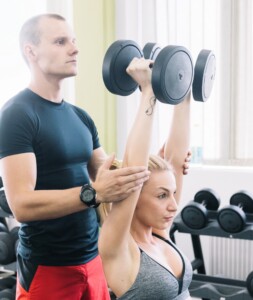
What’s the point in going to college to major in personal training, when you can just study for a certification test? (more…)
Heavy Bag HIIT Workouts: High Intensity Interval Training

High intensity interval training can be applied to a heavy bag punching and kicking workout, and this is very effective for burning fat.
Because I’m a former certified personal trainer with a martial arts background, and because I’ve taken many “cardio kickboxing” classes at the health club, I’m very familiar with the effectiveness of punching and kicking a bag.+
For a high intensity interval training workout using a heavy bag, three punches come to mind: uppercut, cross and hook.
These kind of punches can be slammed full-force into the heavy bag.
The best kicks include the front, crescent and roundhouse, though a spin kick would also be great for more advanced individuals.
You can learn basic techniques by attending a cardio kickboxing class or a shadow boxing class at your local health club.
If you don’t belong to a health club, there are videos of proper techniques.
You absolutely must learn proper punching and kicking techniques to bring on an effective HIIT session.

Shutterstock/Dmitry Kalinovsky
Very short, highly intense bouts of striking, alternating with light lower body activity, will burn more calories over the duration of the workout, than will a more sustained, even-paced session of striking.
HIIT also produces the amazing “after-burn” that will strip off body fat.
Drive your hardest strikes into the bag for about 30 seconds, then for a few minutes or just one minute, pace about for recovery energy.
Another variation is to throw a rapid, hard 1-2 punch, then immediately follow up with a single or double kick.
Another option is after the 1-2 throw (which can be a left-right cross; cross-hook or uppercut-hook, e.g.), do a knee tuck jump.
Then immediately repeat the 1-2 sequence and again the knee tuck jump.
Keep doing this for 30 seconds, then take your passive rest.
Some might even want to do pushups or pull-ups in between kicking intervals.
Five Benefits of HIIT
• Improved Cardiovascular Fitness: HIIT enhances heart and lung health by pushing your cardiovascular system to work harder in short bursts, leading to better endurance and overall fitness.
• Increased Calorie Burn: HIIT workouts are known for their high calorie-burning potential, both during and after exercise.
The intensity of HIIT boosts metabolism and promotes significant calorie expenditure, aiding in weight management.
• Enhanced Muscle Strength and Tone: The varied exercises in HIIT, including strength-based intervals, help build and tone muscles, improving overall strength and physique.
• Efficient Use of Time: HIIT workouts are typically shorter in duration compared to traditional exercise routines, making them ideal for those with busy schedules.
• Improved Insulin Sensitivity: HIIT can enhance insulin sensitivity, which helps regulate blood sugar levels and reduces the risk of type 2 diabetes.
This is particularly beneficial for individuals looking to improve metabolic health.
 Lorra Garrick is a former personal trainer certified through the American Council on Exercise. At Bally Total Fitness she trained women and men of all ages for fat loss, muscle building, fitness and improved health.
Lorra Garrick is a former personal trainer certified through the American Council on Exercise. At Bally Total Fitness she trained women and men of all ages for fat loss, muscle building, fitness and improved health.
.
Top image: Shutterstock/bg_knight
Solutions if You Worry Other Gym Members Will Stare at Your Size
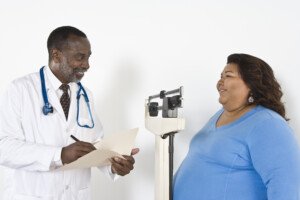
This clever trick will instantly relieve overweight people from worrying others at the gym will stare at them. (more…)
Why It’s Okay for Obese People to Focus on Weight Loss

A growing movement insists that it’s harmful for overweight and obese women and men to focus on weight loss, but here is why they are very wrong. (more…)
Can Dry Mouth Be the Only Symptom of Sjogren’s Syndrome?

Can Sjogren’s syndrome present with just dry mouth only?
If you’ve been suffering from dry mouth, could this be Sjogren’s syndrome, even though you don’t have any other symptoms or ailments? (more…)
Backwards Treadmill Walking: How Many Minutes Should You Do?
Find out how little time you really need to walk backwards on a treadmill to reap benefits. (more…)
Do You Need to Exercise if You Walk Everywhere?

If you believe that walking everywhere (no car) means you don’t need to do structured cardio exercise, you’re very mistaken.
To produce a training effect on the heart, exercise must keep the heart elevated for at least 20 minutes, though at higher intensities, even 10 minutes will do.
The elevation need not be literally every second of those 20 minutes, such as in high intensity interval training.
If you walk everywhere, your heart rate isn’t necessarily elevated at all. Consider “walking everywhere” a form of transportation, not exercise.
Ask yourself if there’s a progressive component:
• Has the walking speed increased over time?
• Have inclines been added?
Walking at a transportational pace is just too easy to be considered valuable exercise to strengthen the heart and bones.
And no matter how much you walk every day, you still need to strength train too!
I once read in a forum a post from a person who criticized another’s suggestion that people give up driving to save money, improve environmental air, avoid accidents, etc. (no mention of the increased exercise).
Someone responded by stating that taking the bus everywhere was very impractical and time consuming. The first person then stated that buses run everywhere at all hours.
The other person said that a trip to the gym would take two hours via the public transportation system.
That’s when the first poster said, “If you walk everywhere, you won’t need to go to a gym.”
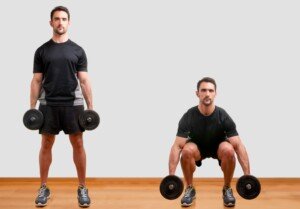
Does walking replace this? Shutterstock/ruigsantos

Does walking replace this? Shutterstock/Syda Productions
I couldn’t believe it. If you walk everywhere, think of what kind of walking this would consist of: casual paced movement.
If you walked to the post office, would you be up to tossing in some high intensity interval training?
It’s highly unlikely that at any point during ambulation, a person who “walks everywhere” would incorporate serious fitness striding into their casual forays.
Imagine walking to your job. Are you willing to work up a sweat and enter your office perspiring in your workplace clothes?
Or are you willing to pack away your high heels, stockings and power suit in a sack as you briskly stride to work, then change in the bathroom?
Or are you up to changing into exercise clothes after work, then busting out of the building and power walking all the way home, or even half-way and then strolling the remainder, while you suck in the exhaust fumes of rush-hour traffic?
What about all the calories burned?
If you walked everywhere and never used a motor vehicle, you’d burn a lot more calories than if you drove or rode a bus.
However, the fitness and cardiovascular component would be absent, because transportation-paced walking, even for miles, does not impose enough demand on the cardiovascular and musculoskeletal systems to produce a physically fit body.
In this case, the calories burned simply reflect mileage, not intensity.
Furthermore, exercise isn’t always about burning calories; many people who exercise do so for fitness and health, and don’t need to lose weight.
Even if you made an effort to make as much of all the walking as briskly as possible, your body would eventually adapt very well to this.
And then what? How fit can you possibly get if all you do is briskly walk? It’s limited, unless there are hills involved.
If you “walk everywhere,” you still need structured cardio exercise — and of course, strength training!
 Lorra Garrick is a former personal trainer certified through the American Council on Exercise. At Bally Total Fitness she trained women and men of all ages for fat loss, muscle building, fitness and improved health.
Lorra Garrick is a former personal trainer certified through the American Council on Exercise. At Bally Total Fitness she trained women and men of all ages for fat loss, muscle building, fitness and improved health.
.
Top image: Freepik.com/ asierromero
Should Obese Individuals Do Only Cardio Exercise for Weight Loss?

Should fat men and women stick to ONLY cardio exercise for their weight loss attempts?
If you’re obese and you’ve been grinding away hour after hour, week after week, on cardio machines–and doing nothing else for weight loss–there’s a pretty good chance you will never even get halfway to your weight loss goal.
(more…)


